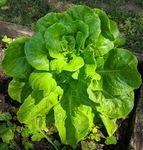SUMMER GARDEN PRIME TIME - University of Maryland ...
←
→
Page content transcription
If your browser does not render page correctly, please read the page content below
Frederick County Office
330 Montevue Lane
Frederick, Maryland 21702
TEL 301-600-1594
FAX 301-600-1588
http://extension.umd.edu/frederick-county
SUMMER GARDEN PRIME TIME
By Blanca Poteat,
Master Gardener
This is NOT about cicadas. Living in the Mid-Atlantic region, you already know about those. By
early July they’ll go underground for another 17 years.
This IS about caring for your growing things as spring becomes summer and the weather heats up.
Whether your garden resides in pots on a balcony or patio, in a corner of a yard or field, or in a
community garden plot, this is prime time. Here are a few tips to help you grow:
Water—Five easy steps:
Early. Water in the morning or two hours before sunset, to allow plant leaves to dry completely and
discourage fungus.
Consistently. Soil should be evenly moist. Plants need to be watered if the top inch or two is dry.
Deeply. The top five inches of soil should be moistened. Shallow watering causes shallow root
growth, causing plants to wilt easily.
Directly. Aim the stream at the base of the plant with a hose or drip irrigation, not a sprinkler.
Frequently. Sand and heavy clay soils lose moisture more quickly than loose, friable soil.
To prevent water loss by evaporation, add about two inches of mulch/composted leaves around
plants. And watch your plants for wilting or withering foliage. Timely watering can help them
recover.
For more information on watering during a drought, go to: https://extension-
old.seed.umd.edu/sites/extension.umd.edu/files/_docs/programs/hgic/HGIC_Pubs/ornamentals/HG8
5_Watering_tips_drought_2018.pdf.
Succession planting
Some vegetables and flowers, like winter squash and potatoes, may grow throughout the spring and
summer seasons and need lots of space to spread. But for shorter-term plants, planting something
new in the spots they vacate can maximize your garden’s production.
For vegetables, cool season crops are followed by warm season crops, followed later in the summer
by more cool season crops. Some succession examples:
Peas (plant on or about 3/1), squash (6/1), kale (9/1)
Lettuce (3/20), green beans (5/15), broccoli (8/1)
Cucumber (5/1), green beans (7/15), spinach (9/20)
You can also plant the succeeding plants or seeds beside or in front of mature plants while those are
still productive. The new plants benefit from the shade of the established plants and share their
supporting cages, fences or trellises. For example:
Peas (3/15), cucumbers (5/15), tomatoes (5/15), kale (9/1)
Lettuce (3/30), bush beans (6/10), swiss chard (8/20)
Arugula (3/30), summer squash (5/20)
More information can be found at https://extension.umd.edu/resource/planting-vegetables-
succession.
University programs, activities, and facilities are available to all without regard to race, color, sex, gender identity or expression, sexual orientation, marital status, age, national origin, political
affiliation, physical or mental disability, religion, protected veteran status, genetic information, personal appearance, or any other legally protected class.Flowers Planting flowers among the vegetables provides beauty for the gardener and nectar for birds and pollinating insects, essential for vegetable production. And flowers like marigolds, chrysanthemums, petunias and borage can actually repel insects like plant lice, ants, hornworms and mosquitos. You can also let a few of your vegetable plants mature or “bolt” to produce flowers that add beauty and attract beneficial insects. Plant perennial flowers where they can brighten your garden every year. Plant annual flowers where they can flower for a longer period than perennials. If possible, choose native perennial varieties that grow well in Maryland, including aster, butterfly weed, milkweed, purple coneflower and black-eyed Susan. Flower varieties that produce single rather than double flowers are richer sources of nectar for pollinators and songbirds. And after flowering, you can leave some annuals to complete their growing cycle and produce seeds for the birds. More Summer Gardening Options To increase gardening areas, encourage pollinators and birds, and conserve water, many gardeners are transforming lawn areas into flower and vegetable gardens. Native flowers, groundcovers, and ornamental grasses are attractive and well-adapted to local soils and weather conditions. Depending on the soil underlying the grass sod that you remove, some compacted or clay soils may need added compost, sand and other organic materials. And new legislation in Maryland supports these gardening practices by prohibiting “unreasonable limitations on low-impact landscaping such as rain gardens, pollinator gardens, and xeriscaping” healthy landscapes with reduced water usage). Enjoy your summer gardening! Following are several websites that provide additional information for your summer growing pleasure. Native plants recommended for Maryland: https://extension.umd.edu/resource/recommended-native- plants-maryland Pollinator gardens: https://extension-old.seed.umd.edu/hgic/topics/pollinator-gardens Creating a wild backyard: Hummingbirds, butterflies and bees: https://dnr.maryland.gov/wildlife/Pages/habitat/wahumbutbee.aspx Native plants and climate change: https://extension.umd.edu/resource/native-plants-and-climate- change Lawn alternatives: https://extension-old.seed.umd.edu/hgic/topics/lawn-alternatives Xeriscaping and preserving water in the landscape: https://extensionold.seed.umd.edu/sites/extension.umd.edu/files/_docs/programs/hgic/HGIC_Pubs/L andscape/HG25_Xeriscaping_and_Conserving_Water_in_Landscape_2018.pdf Maryland legislation HB0322 takes effect October 1, 2021: http://mgaleg.maryland.gov/2021RS/fnotes/bil_0002/hb0322.pdf
Create garden diversity with an annual
(zinnias), a perennial (yarrow), and two
vegetables (peas and flowering lettuce).
Sugar snap peas
climb skyward on
a garden fence.
Buttercrunch lettuce doesn’t
attract many nibbling insects.
A swallowtail butterfly sips nectar from
single-flowered calibrachoa.Pho
A bumblebee pollinator visits a trumpet-
shaped daylily.And as always, for more information, please visit the Frederick County’s Master Gardeners: http://www.facebook.com/mastergardeners/frederickcountymaryland and http://extension.umd.edu/frederick-county/home-gardening, or call us at 301-600-1596. For more information about the Frederick County Master Gardener/Horticulture Program, visit: http://extension.umd.edu/frederick-county/home-gardening or call Susan Trice at the University of Maryland Extension Frederick County office, 301-600-1596. Find us on Facebook at http://www.facebook.com/mastergardenersfrederickcountymaryland University programs, activities, and facilities are available to all without regard to race, color, sex, gender identity or expression, sexual orientation, marital status, age, national origin, political affiliation, physical or mental disability, religion, protected veteran status, genetic information, personal appearance, or any other legally protected class.
You can also read






















































